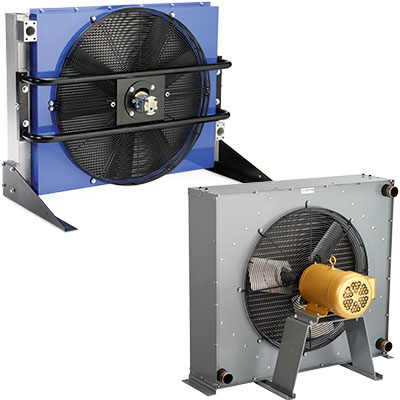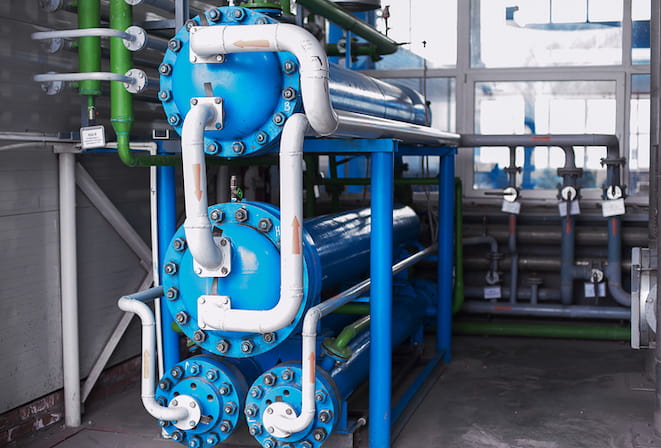A Comprehensive Overview to Choosing the Right Heat Transfer Solutions for Your Demands
Picking the proper Heat transfer system is crucial for operational effectiveness. Numerous systems provide to various requirements, influenced by factors such as temperature range and liquid type. Recognizing the concepts behind Heat transfer, such as convection, conduction, and radiation, is important. Additionally, assessing power resources and upkeep methods can influence long-lasting efficiency. A closer assessment of these factors to consider discloses how to tailor a system to particular requirements. What should one prioritize in this complicated decision-making process?
Comprehending Heat Transfer: Secret Concepts and Concepts
Although Heat transfer may feel like a straightforward concept, it includes a variety of principles that are fundamental for efficient system layout. Comprehending these concepts is essential for designers and designers who intend to enhance thermal efficiency in different applications. Conduction, for example, entails the transfer of Heat through strong materials, while convection refers to the motion of Heat within liquids. Radiation, one more essential concept, defines just how Heat can be transferred through electromagnetic waves. Each of these devices plays a crucial role in figuring out exactly how energy relocates within a system. By extensively understanding these ideas, professionals can make educated decisions, making certain that Heat transfer systems run effectively and meet the particular demands of their applications
Kinds Of Heat Transfer Equipments: A Review
Understanding the concepts of Heat transfer prepares for discovering the various kinds of Heat transfer systems available. Heat transfer systems can be classified largely into three types: transmission, convection, and radiation. Transmission involves Heat transfer with solid products, counting on straight contact in between particles. Convection, on the various other hand, takes place in fluids (fluids and gases) where the movement of the fluid itself assists in Heat transfer. Radiation involves the transfer of Heat via electromagnetic waves and does not require a medium, allowing it to occur in a vacuum. Each kind of system has unique attributes and applications, making it crucial for individuals and companies to very carefully examine their particular needs when picking one of the most ideal Heat transfer remedy.
Applications of Heat Transfer Equipments in Various Industries
Heat transfer systems play a necessary function throughout various markets, influencing performance and product quality. In commercial manufacturing processes, they facilitate specific temperature control, while in food and drink handling, they ensure safety and preservation. In addition, a/c and climate control systems depend heavily on effective Heat transfer to maintain comfortable settings.
Industrial Production Processes

Many commercial manufacturing procedures count heavily on reliable Heat transfer systems to take full advantage of productivity and boost product quality. In fields such as metalworking, Heat exchangers play a vital role in maintaining excellent temperature levels during welding, spreading, and building. These systems guarantee uniform Heat circulation, which is essential for attaining desired material buildings. In the chemical manufacturing industry, Heat transfer systems help with precise temperature control during responses, influencing yield and safety and security. Furthermore, in textile manufacturing, reliable Heat administration is essential for dyeing and ending up procedures, affecting color uniformity and textile top quality. By picking suitable Heat transfer innovations, producers can boost power efficiency and lower operational costs, eventually resulting in an extra lasting and affordable production environment.
Food and Beverage Handling
Effective Heat transfer systems are similarly essential in the food and drink handling market, where keeping ideal temperature levels is important for food safety and high quality. These systems play an essential function in processes such as cooking, sanitation, and pasteurization, making sure that products are safe for usage and retain their nutritional worth. Heat exchangers, as an example, effectively transfer Heat between fluids, enhancing energy usage while lessening temperature variations. In addition, refrigeration systems are essential for maintaining perishable items and prolonging life span. The choice of Heat transfer innovation directly affects functional effectiveness and item stability, making it critical for food and drink makers to pick the suitable systems customized to their specific handling demands. This mindful option ultimately adds to consumer fulfillment and food safety.

HVAC and Environment Control
While lots of industries count on Heat transfer systems for efficiency, HVAC (Heating, Air Flow, and Air Conditioning) plays a necessary function in keeping indoor environment control throughout different settings. These systems utilize Heat transfer concepts to control air, temperature level, and humidity quality, guaranteeing convenience and safety and security in household, industrial, and industrial environments. Properly designed HVAC systems enhance power performance, minimize operational expenses, and minimize ecological influence. In industrial buildings, as an example, effective climate control adds to worker efficiency and customer contentment. In industrial applications, heating and cooling systems help preserve suitable conditions for tools procedure and product conservation. Choosing the ideal Heat transfer system is crucial for conference specific climate control requirements and attaining general system performance.
Evaluating Energy Sources for Heat Transfer Solutions
In examining power sources for Heat transfer systems, a comparison of sustainable power options and nonrenewable fuel source factors to consider is vital. Sustainable sources, such as solar and wind, deal sustainable choices that can reduce environmental effect. Conversely, nonrenewable fuel sources remain prevalent because of their recognized framework and energy density, motivating a mindful analysis of both options.
Renewable Resource Options

Fossil Fuel Considerations
Assessing fossil fuel considerations is vital for the performance and sustainability of Heat transfer systems. Nonrenewable fuel sources, such as all-natural gas, oil, and coal, are conventional energy sources that offer significant Heat result, making them popular choices for commercial and household applications. Their ecological influence, including greenhouse gas discharges and source depletion, raises problems. When selecting a warmth transfer system, it is vital to assess the availability, expense, and regulatory elements associated with these fuels. In addition, the efficiency of fossil fuel systems Our site have to be taken into consideration, as greater performance can alleviate some ecological downsides. Inevitably, a balanced strategy weighing performance and sustainability can guide decision-makers towards the most proper Heat transfer remedy for their details demands.
Variables to Think About When Choosing a Warmth Transfer System
Picking a suitable Heat transfer system requires mindful factor to consider of various elements that can substantially influence effectiveness and performance. One vital variable is the operating temperature level range, which dictates the products and design suitable for the application. Furthermore, the sort of liquid used in the system-- whether gas or liquid-- influences Heat transfer performance and compatibility. The system's dimension and ability have to straighten with the certain needs of the operation to prevent ineffectiveness. Power source availability is also essential, influencing operating prices and sustainability. The installment setting, consisting of space restrictions and availability for upkeep, plays a considerable role in system option. Regulatory compliance and safety standards should be considered to assure the system meets all legal needs.
Maintenance and Performance Optimization for Heat Transfer Solutions
Preserving Heat transfer systems is vital for making sure optimal efficiency and durability. Routine upkeep activities, such as cleansing Heat exchangers and inspecting insulation, assistance avoid effectiveness losses because of fouling and thermal bridging. Additionally, monitoring system specifications, including stress and temperature level, enables for very early detection of abnormalities, reducing downtime and pricey repairs. Carrying out a preventative maintenance schedule can enhance performance and prolong the lifespan of parts. Updating to innovative control systems can boost functional efficiency by changing to varying lots and conditions. By prioritizing upkeep and effectiveness optimization, operators can attain reduced energy usage, lower functional prices, and boosted overall system dependability, inevitably causing far better source use and a much more lasting operation.
Future Fads in Heat Transfer Technologies
As markets progressively prioritize sustainability and power performance, future trends in Heat transfer modern technologies are readied to undergo considerable transformations. Advancements such as innovative materials, including carbon nanotubes and nanofluids, assure enhanced thermal conductivity and performance. In addition, the combination of renewable energy sources right into Heat transfer systems is obtaining energy, promoting eco-friendly services. Smart innovations, consisting of IoT sensors, are anticipated to revolutionize tracking and control, making it possible for real-time data analysis for enhanced performance. The advancement of compact and modular systems will assist in easier setup and upkeep, providing to diverse applications. These developments indicate a shift towards even more lasting, efficient, and versatile Heat transfer options, aligning with worldwide energy objectives and environmental requirements.
Frequently Asked Questions
What Are the Ecological Impacts of Heat Transfer Solutions?
The environmental effects of Heat transfer systems can include greenhouse gas exhausts, energy consumption, and prospective thermal pollution. In addition, improper disposal of inadequacies and products can add to source exhaustion and ecosystem interruption.
Exactly how Do I Determine the Cost-Effectiveness of a Warm Transfer System?
To compute the cost-effectiveness of a heat transfer system, one must assess initial expenses, operational expenditures, upkeep demands, and energy efficiency, contrasting these variables against the expected life expectancy and efficiency of the system.
Can Heat Transfer Solution Be Made Use Of in Residential Settings?
Heat transfer systems can indeed be content made use of in property setups. They provide reliable home heating and cooling solutions, making homes a lot more comfy while possibly lowering energy expenses. Their versatility permits for various applications in property atmospheres.
What Safety Laws Apply to Heat Transfer Solutions?
Security regulations for Heat transfer systems commonly consist of guidelines on operation, setup, and maintenance. Compliance with local structure codes, maker specifications, and market requirements is vital to assure safe and effective system performance their website in various applications.
Just How Do Various Products Affect Heat Transfer Performance?

Conduction, for instance, involves the transfer of Heat through solid materials, while convection refers to the movement of Heat within liquids. Understanding the principles of Heat transfer lays the foundation for checking out the different types of Heat transfer systems available. Heat exchangers, for circumstances, efficiently move Heat between liquids, enhancing power usage while reducing temperature variations. In evaluating power resources for Heat transfer systems, a contrast of eco-friendly power choices and fossil gas considerations is necessary. Metals, such as copper and light weight aluminum, conduct Heat efficiently, whereas insulators like rubber and glass reduce down Heat circulation.